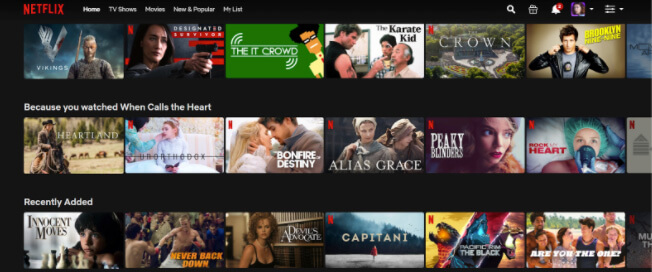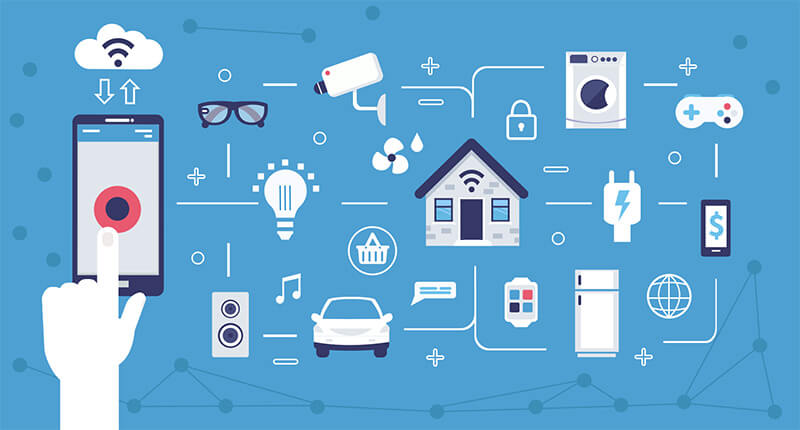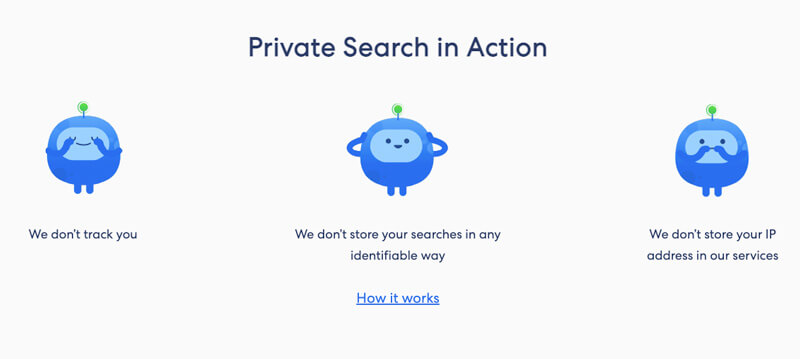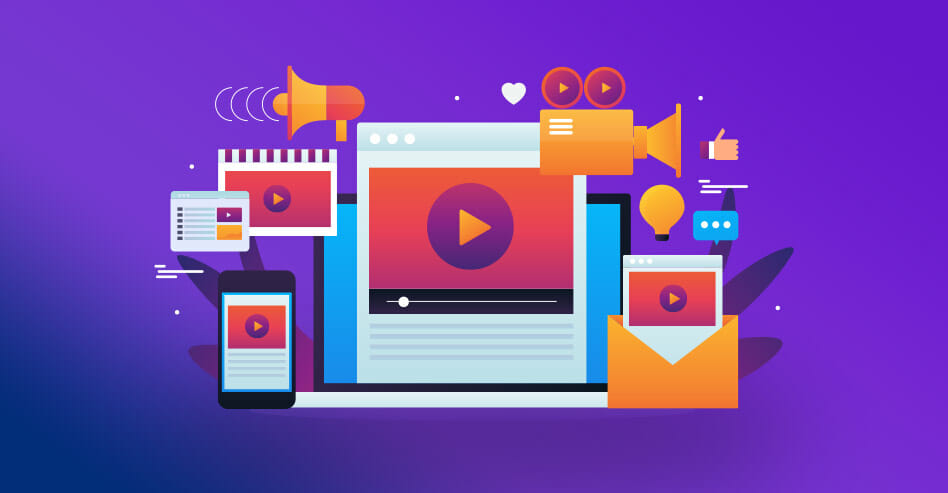
The Top 50 Digital Marketing Trends for 2024
Advertising market trends
1.Programmatic Advertising
What is programmatic advertising? It means advertisers automate ad buying to target more specific audiences. This type of automation results in faster and efficient bidding. Advertisers then, have to spend less time and effort planning the ad bidding and buying.
In this post
How does programmatic advertising work?
Step 1 – a user clicks on the webpage
Step 2 – the publisher puts the ad impression for auction
Step 3 – the ad marketplace holds an auction where advertisers bid for the impression
Step 4 – the advertiser with the highest bid wins the right to display their ads
2.Marketing Personalization
If something we learned from 2020 is that to succeed at marketing in 2024 you need to personalize your marketing activities, including content, emails and ads. Great examples of personalization are Netflix and Amazon, with their tailored content and products suggestions.
The more personalized the content, the higher the customer engagement and loyalty.
3.Google Ads Smart Bidding
This system allows Google to manage advertisers’ PPC campaigns through Google’s AI system. The system then optimizes the advertiser’s budget to maximize their ROI. Advertisers can choose many criteria for their bid optimization, including device, physical location, remarketing list, ad characteristics, interface language or browser. Anti Ad-Blockers
Many websites have ad-blockers, preventing ads to be served to users. This causes serious revenue damage, which can range up to 40% loss from adblocking. Therefore, one of the trends we are seeing for 2024, is the popularization of anti-ad-blockers.
Anti-ad blockers are useful software solutions that bypass ad blockers. Not all the solutions work for all the ad blockers. You can also opt to work with an ad network that serves ads that bypass ad-blockers. However, not all ad networks work with all the ad blockers.
4.IoT Advertising
To be connected nowadays goes beyond, smartphones, laptops and tablets. There is a world of connected devices, from smart cars to smart houses. These type of connected devices are called the Internet of Things.
Companies have tried to use the Internet of Things for advertising. For example, including ads in smart cars systems, or include sensors in spirits bottles. As more connected devices are developed, more opportunities for IoT advertisement will appear.
Social media market trends
5.Influencer Marketing
What’s an influencer? An influencer is a person that, as a referent, can carry a brand message to their market. Influencers are not only celebrities, but Instagram or YouTube personas, that have their niche of followers. Their audience can go from a few thousand to millions. Influencer marketing has become more popular recently because of the following reasons:
- It’s organic
- It’s authentic
- Connects with the customer
Many companies are leaving traditional advertising in favor of pairing with influencers that carry the word about their products or services. For example, GoodFoods, partnered with 60 influencers to produce content and recipes using GoodFoods products online.
How do you find the right influencer for your company is another story. Luckily, there are AI solutions that allow companies to rank and score influencers by niche, followers and ROI potential.
6.Social Messaging Apps
Messaging apps are not only for communicating with your friends. With more than one billion monthly users active on Facebook Messenger, companies are taking the opportunity to connect with their audience through messaging apps.
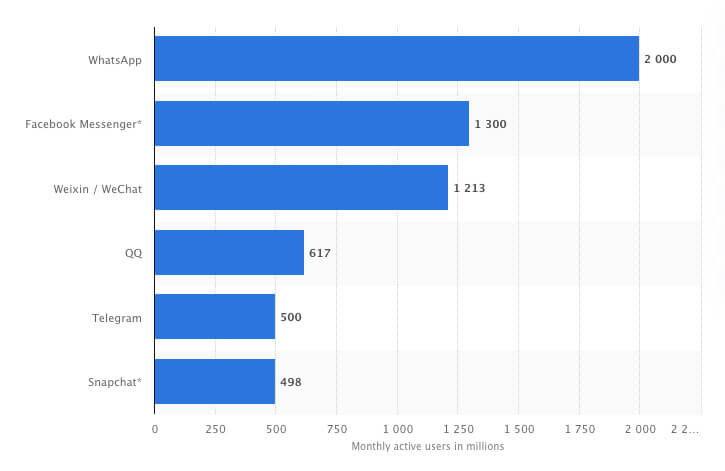
Social messages give businesses the chance to send messages to customers directly, answer queries, and conduct direct sales. It works as a live chat for customers to reach you, then you can provide assistance, remind them of abandoned carts, send event invitations, and more.
7.Stories on Social Media
Instagram and Facebook allow users to share stories, and since their appearance, they became really popular with users. Here are some statistics:
- 500 million people use Instagram Stories every day
- More than half of Instagram users become interested in a brand after seeing it in an Instagram Story.
- Half of the users say that they are interested in purchasing a product because they saw it in an IS.
8.From Social Media to Social Marketplace
Social media platforms have added eCommerce features in 2020. The goal is to provide users with a seamless journey from discovery to purchase. We can expect the trend to grow in 2021, with brands using social media platforms as a marketplace. The next section explains what tools they will likely be using.
9.Social Commerce & Shoppable Posts
As mentioned above, social media platforms are investing in adding ecommerce features to social posts. For instance, Instagram shoppable posts:
How do you do it? You can add tags to the products on your stories or posts, the tags will take your customer to a page where they can purchase the product.
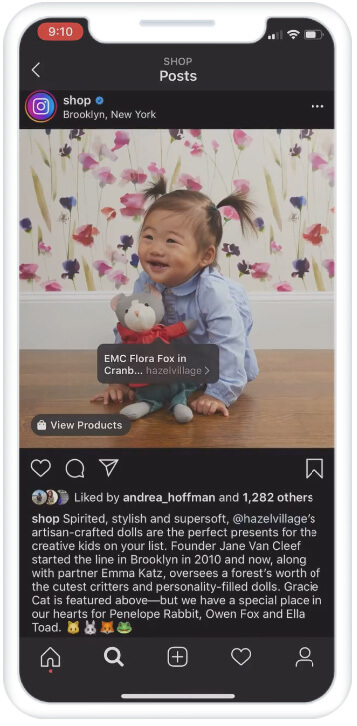
10.Facebook May Have Reached its Peak
According to the recent 2020 Facebook performance update, there is reason to think that the network is entering plateau.

The network is showing less monthly and daily new users. Why there are less users is not clear, but the network is completing its second decade, and there are other competitors appearing.
11.Focusing on the social media channels that work
With so many social media channels available, companies can feel overwhelmed to try to keep relevant on all of them. Therefore, reducing their social media channels to focus on what it really works for their audience is likely to be a necessity for 2024.
12.The rise of UGC (user-generated content)
User-generated content will become a central part of marketer’s strategy in 2024. Advertisers are using AI to create ads that work with user-generated content. Brands like Lush cosmetics use Instagram hashtags to drive UGC to work for them.
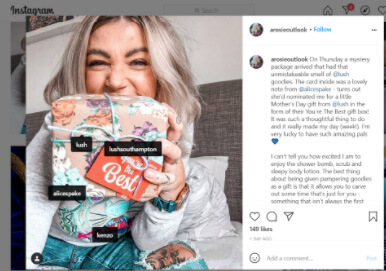
Another example that uses user generated content is Aerie. They usually #regram — taking a post from another user account and reposting on your own — as a social media strategy.

Source: Instagram
SEO market trends
13.Content Marketing Is Still King
Content is king, we are used to hearing. The reality is that search engines like Google, prioritize well-written content and useful links when ranking sites and presenting search results to users.
In recent years, the changes in Google algorithm prioritized, even more, the relevance of content for SEO. The effects on marketers were fast to follow:
88% of marketers are realizing that creating content that is useful to their audience presents their organization as a credible source.
Moreover, investing in content marketing can be a cost-effective way to attract customers to your site and engage them.
“Content marketing has lower up-front costs & deeper long-term benefits than paid search, says @JuliaEMcCoy. “
With search engines prioritizing well-written and useful content, it is safe to say that content marketing is a trend that will continue well into 2024.
14.Branding focus
Consumers are overwhelmed by the sheer amount of options they have every time they research something online. With this marketing landscape, having a distinct, unique, and recognizable brand is key for success.
As most companies moved online last year, the problem of too many options is even worse. In 2024, you’ll see more companies focusing on branding strategies than on hard selling. One of the reasons branding is so critical now for survival is that search engines prioritize ranking brands over sites. More in the following section.
15.EAT
E.A.T is one of the most important criteria Google uses to rank brands and sites. It stands for:
- Expertise: your pages need to have quality content written by an expert in the subject.
- Authority: you need to build your brand’s authority on the subject.
- Trustworthiness: your site needs to connect with other authorities on the subject.
These criteria measure the quality of a web page. It works because all websites need to have it if they want to get ranked in a search engine. The higher they measure in these three criteria, the higher the rank. E.A.T measures how a page fulfills the purpose of helping users. As Google says in their terms:
“Websites and pages should be created to help users”
16.A/B Testing for SEO
A/B testing is used across industries, not only in marketing. But it is safe to say that currently, much of modern marketing is about testing and analytics. Long gone are the days of measuring a campaign’s success by trial and error.
By applying A/B testing to SEO, you actually test the content beforehand. Then, you can identify which version of the site is generating more results.
What can you use A/B testing for?
You can use A/B testing to experiment with:
- Meta titles and descriptions
- URL structures
- Headlines
- Calls to action
- Sales pages
- Product descriptions
17.Interactive Content
Interactive content is one of the trends that grew faster last year. With our lives moving online, consumers wanted to replace as much as possible personal interaction with the brands. Examples of interactive content include:
- Quizzes and polls
- Augmented reality solutions
- VR ads
The key is engaging the user and offer an immersive experience. Online retailers, for example, let you know what is your exact size with online calculators. Beauty brands use AR to let you try hair color with a virtual assistant to check how a specific hair color will look on you. The possibilities are endless to make the experience more memorable for the user.
18.The Rise of the Featured Snippet
What is “position zero”? The term refers to the topmost position in SERP results. This position is usually occupied by the featured snippet.
What is a featured snippet?

Why is it important? Well, this coveted space answers a user query without the need to click a link. If you get to rank in this space, you found the pot of gold at the end of the rainbow. Moreover, featured snippets are used to answer voice searches. Since a third of Internet searches are done using voice search, you can get your content to answer the question.
19.SEO Is Not Dead – It Uses Structured Data
The term structured data refers to any data organized so search engines can crawl and categorize it. Structured data can give your site’s SEO a boost, since your content will be more useful and easily to categorize. Structured data can get you in the coveted position zero, as a featured snippet or a Knowledge Graph Box.
Structured data generates “rich snippet results”, the snippets with images, pricing and statistics:

Rich snippets are great for driving traffic and clicks, especially with mobile users.
20.Cumulative Layout Shift
This metric measures how visually stable your page is. To put it simple, the CLS score helps you understand how likely your page is giving an unpleasant visual experience to users.
According to Google, a good score for mobile and desktop pages is less than 0.1. A score greater than 0.25 is considered not good.
What can cause CLS?
- Many different fonts in the page
- Ads that shift the content
Why is it important? Unsurprisingly, a high CLS causes conversion rates to drop and bounce rates to rise. After all, few users will stay and purchase on a site that gives a rugged experience. That’s why we are likely to see more sites analyzing their CLS in 2024.
21.Pillar Content
Unlike what you may think, in 2024, the usual under 1000 posts won’t get you anywhere. According to experts like Neil Patel, posts that are around 3000 words long attract the most traffic and engage more readers. The length offers readers the opportunity to explore subjects in-depth. A content creator that produces long-form content regularly can establish itself as an authority on a subject.
A study found that long-form content helps more with SEO, as gets three times more backlinks than short articles. Want more proof? When you search a query on Google, chances are that the top 10 results are longer articles. Some benefits of pillar content include:
- Longer time-on-site
- Reduced bounce rate
- More backlinks and social media shares
- Higher Google ranking
22.Image and video SEO for visual searches
This was a game-changer. Instead of trying to describe what you want to search, you can upload an image and get more specific results.

You just upload the image of what you want to look and Google offers similar images:
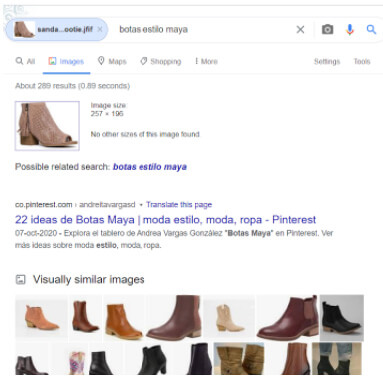
Visual search is so convenient and useful that many companies jumped into the trend. One example is Pinterest Lens, a visual search tool that lets you take a picture of an item to search for similar products, view pin boards about it or find out where to buy it online.
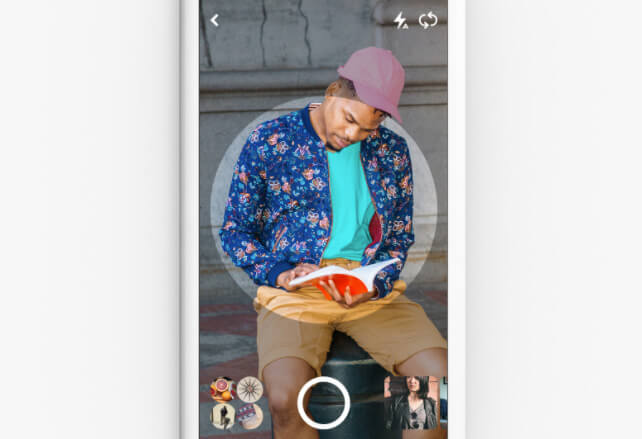
Source: Pinterest Newsroom
The success of this tool shows how much visual search is engaging users. Since the beta version, Lens recognizes 2.5 billion home and fashion items and it drove Pinterest searches to skyrocket.
But not only Pinterest is taking advantage of this, Google and Bing also launched similar visual search engines.
23.Semantic Keyword Research
All content writers have heard it: Write for people, not for Google. A blurb of 4000 words won’t get the results you want if it is not matched to user intent. When Google analyzes your content to check if it matches a specific query, it doesn’t take only into account lone keywords.
The engine makes a semantic analysis to discover what exactly wanted the user to achieve with this question. When you write with the user intent in mind, these semantic keywords give Google a better idea of what your content is about and how it can help users.
24.More Investment in Analytics
As we explained before, today’s marketing is all about metrics. Therefore, more companies are investing in better analytic tools that go beyond the basics of Google Analytics. Better analytics result in better business intelligence and support decision-making.
25.Increased Security
As more people conduct activities online, the need for more security to protect the websites is greater. A secure website makes a user feel safe to hang around.
Data breaches happen to everyone, small and large websites and platforms. Therefore, most consumers think that how you manage their sensitive data can be a deal breaker when consuming your content, products or services. In 2021, increasing web security is not an option.
26.Progressive Web Apps (PWAs)
You have responsive sites that work on mobile as well as on desktop and you have mobile apps. Now, this new trend, Progressive Web Apps, is basically websites that work like mobile apps. For web developers, this can be a one-in-all solution to have a website and an app all in one.
As the number of mobile users increase, more companies will leverage this type of web app.
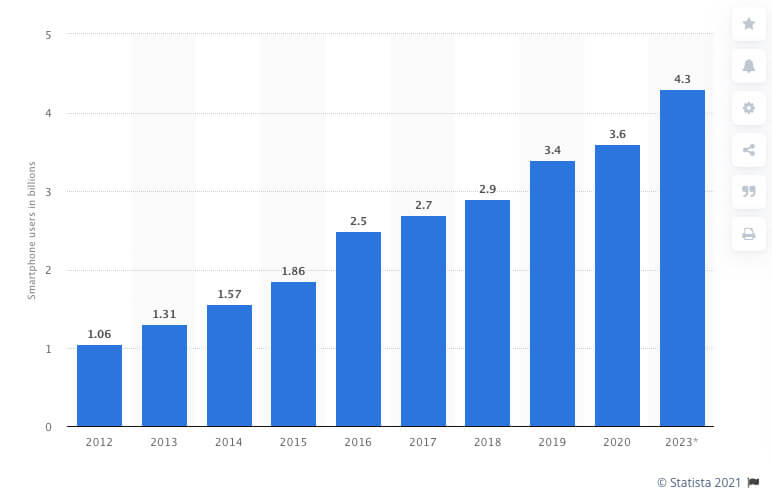
other engines have appeared with the intention to provide users with more privacy. One such example is Privado.com. This engine focused on private searching, gives the users the possibility of searching without being tracked. The engine doesn’t store personal information, nor uses cookies or any means of tracking. The goal is to provide the user with an absolutely private search experience.
Automation & AI
28.Artificial Intelligence
Back in 2017, Gartner predicted that AI would be in almost every software product by 2020. And they were right. The artificial intelligence market is expected to reach $190 billion by 2025.

AI can collect and analyze data from social media and customer interactions to evaluate customer’s behavior. AI searches patterns, allowing you to understand your audience preference.
29.Chatbots and Conversational Technology
Last year, conversational technology exploded as a contactless way for consumers to connect with companies. According to Gartner peer insights, the conversational platforms that are driving trends include:
- strong Natural Language Processing capabilities,
- supports voice and text input
- Use personalization for natural conversation
- Allow media and document sharing
- Provide dialogue management
- Multiple chatbot orchestration
- Data maintenance
Why chatbots?
- 24 hrs service
- Provide an instant response to customer queries
- Allows to triage and solve simple issues.
For example, Olive, the assistant of Woolworths, Australia’s supermarket chain, lets you order and upgrade your mobile SIM card.
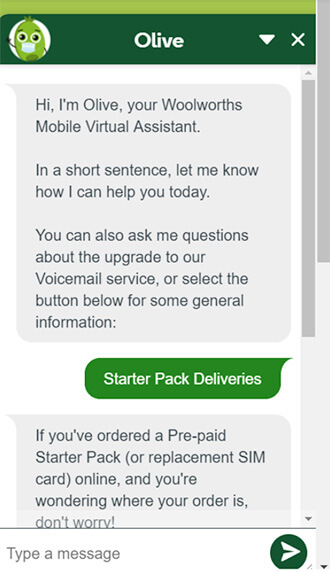
Source: Woolworths
Brands, like Sephora, are leveraging on chatbots to provide help and product recommendations to potential customers.
30. Big Data and Deep Learning
Big Data and deep learning will continue to grow in 2024, according to a report. More importantly, more companies will use big data analysis to improve their business efficiency and drive innovation.
31.Augmented Reality (AR) & Immersive Technologies
Companies like Facebook are diving deep into the use of augmented reality to enhance the customer experience. Facebook Oculus gives users the opportunity to play without pushing buttons, transforming the gaming experience into an immersive virtual reality one.
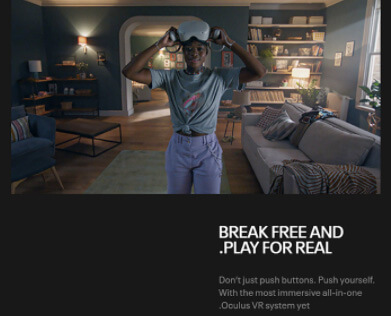

Source: IKEA Place
Other ways you can use VR to provide meaningful experiences to your audience:
- Augmented Reality ads – for gaming and consumer products
- 360-degree videos – for real estate, tourism.
32.`Predictive & Augmented Analytics
Predictive analytics consists of the combination of data mining, predictive modeling, and machine learning to identify patterns and come with forecasts. More digital marketing companies are using predictive analytic tools to predict consumer behavior and identify trends.
Gartner defined augmented analytics in 2017, claiming it to be the future of data analytics.
“Augmented analytics is the use of enabling technologies such as machine learning and AI to assist with data preparation, insight generation, and insight explanation to augment how people explore and analyze data in analytics and BI platforms. It also augments the expert and citizen data scientists by automating many aspects of data science, machine learning, and AI model development, management, and deployment.”(Gartner)
Putting it simply, augmented analytics use machine learning to deepen the understanding of the data and take even larger datasets.
Other Important marketing trends to be aware
33.Live streams (TikTok anyone?)
Streaming is every day more popular, and the explosive growth of TikTok confirms it. With Instagram adding Reels with in-video shopping capabilities and Tik Tok on the way to do the same, it won’t be longer before live streaming in social media turns into a real-time marketplace.
34.Companies pivots may stay that way
2020 changed the digital landscape for good. It is unlikely we will come back to pre-2020 conditions. Consumers are enjoying the convenience of online commerce. Hence, companies that pivoted to adapt last year, may find now their customers expect them to continue on the same line.
35.Purpose-driven campaigns
Last year marketing campaigns were tinted with a purpose: helping customers overcoming the pandemic as much as possible. Purpose-given campaigns will be still relevant in 2024. These campaigns promote social activist themes, for example, the campaigns about Black Lives Matter. The issues resonate with customers and increase engagement with relevant audiences. These campaigns are effective because customers identify with the same social issues the brand cares about.
36.Voice search
Smart speakers and voice assistants are no longer a trendy item to purchase. Statistics predict over half of American homes will own a smart speaker (Google Home, Alexa, and others) by 2022. People use the voice assistants not only for routine activities but for voice shopping. The voice shopping market is expected to reach $40 billion in 2022.
37.Virtual events are here to stay
In 2020, companies and individuals shifted to virtual events out of necessity due to the pandemic. Chances are that in 2024 many events will continue to be virtual because of the benefits it brings to companies. Virtual events can reach a wider audience and allow for higher attendance. So in 2024 we will continue seeing more virtual events.
38.Monetization marketing
If 2024 saw a growth in online activity, it also gave a lot of opportunities for companies to make money from their digital properties. Display ads, search monetization, and in-app advertising are some of the monetization trends we may see growing in 2024.
39.Growth of Geo-Fencing
Geofencing is a marketing approach where you put a geographic limit around a point of interest. If a user’s mobile enters the area, the geofence triggers an alert and delivers relevant ads. Here are some of the benefits of geofencing:
- Mobile ads with geofencing have double the click-through-rate
- It is compatible with most of the smartphones.
- 53% of consumers visited a retailer after receiving a message that is location-based
40.Conversational Marketing
Conversational marketing is the use of conversational technology for marketing purposes. For example using chatbots as “sales assistants”, or SMS marketing to communicate with customers. Several big names are using this technology: Domino’s, Sephora, 1-800-Flowers.
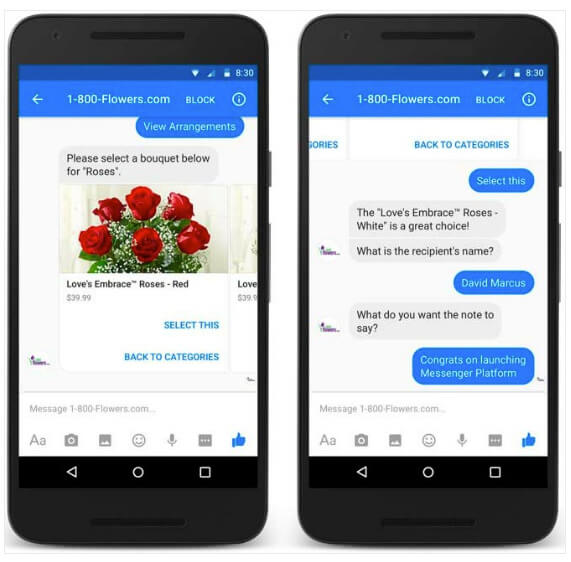
41.Video Marketing
This is one of the most important marketing trends today. Here are some statistics that show why you should incorporate video marketing to your strategy:
- 86% of companies are using video as part of their marketing strategy.
- 93% of these marketers say that video is an important part of their marketing strategy, from a 91% in 2019.
- The videos with most success are explainer videos (73%), followed by social media videos (67%)..
42.Personalized Email
Email personalization uses personal information from subscribers to produce tailored emails. It allows you to send highly targeted email marketing campaigns. Why should you use email marketing personalization?
- 82% of marketers report an increase in email open rates because of email personalization.
- Personalized promotional mailings have 29% more open rates than non-personalized.
43.Browser Push Notifications
With the boom in online commerce, push notifications rose, with most online stores using some type of push notification. They tend to be more effective than a newsletter. You can send abandoned cart reminders, product suggestions, and more. Because of that, we’ll probably see more companies using personalized push notifications in 2024.
44.Omnichannel Marketing
You probably heard about omnichannel marketing in 2020. Is an approach of marketing that uses multiple platforms (for instance, social media, blog, email marketing) to connect with leads. It gives the benefits of providing a cohesive brand message across channels. Omnichannel marketing tends to show higher engagement rates and conversions than using a single channel. Simply put, you broaden the number of touchpoints.
4 5.Neuromarketing
Neuromarketing is not new. Back in 1999, Harvard scientists conducted the first MRI research as a marketing tool, starting the neuromarketing field. This is a research field that analyzes people’s brain activity through head scans to find out the type of content they like. The first studies were conducted for retail marketing. One of the results of neuromarketing is the eye-maps, which measure the interest of a viewer on a website according to where they look on the page. Companies use this information to optimize their content and strategies.
46.Blockchain Technology
A blockchain is a connected series of data records. The records are stored in immutable blocks, secured and connected to each other via cryptography in a neutral computer.
According to Investopedia, “the blockchain is copied and spread across a network of computers, not storing any of its information in a central location”.
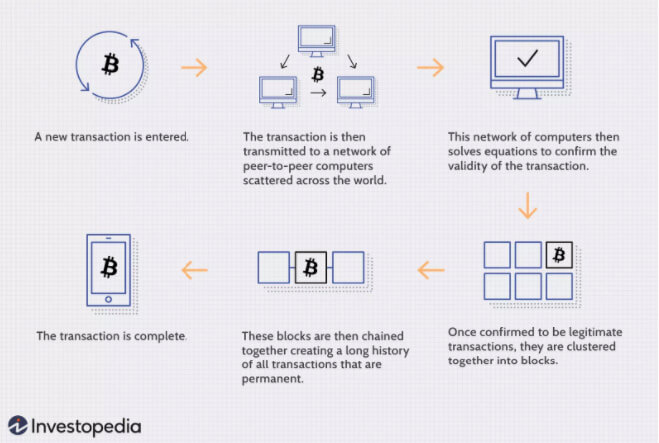
Although usually associated with finances and supply chain transactions, it is starting to get implemented in digital marketing. Since Blockchain eliminates the intermediary, we may see digital marketing companies using blockchain to track media buys, verify online identities or protect personal data.
47.5G Technology
This trend, the fifth generation of mobile technology, will bring many changes to digital communications. Telecom companies aim to achieve a fully mobile connected society, bringing high-speed data transmission to far-reaching areas. Yet, it is more than that, it will give way to more integrated technology.
48.Privacy Marketing
Privacy protection is not only a way of protecting data. These days, with data breaches happening every now and then, consumers need to know they can trust companies will keep their data safe. Thus, marketing teams need to focus on gaining the trust of their audience. One of the ways is protecting the privacy of users by not saving personal data in records. This ensures that in case of a breach, an attacker won’t have sensitive data to steal.
49.Gamification
Keeping your customers engaged can be a challenge. Companies like Starbucks use gamification techniques to connect with their customers. The app uses purchase history and location data to personalize the customer experience and encourage the use of their loyalty program. The app increased their revenue to over $2 billion.

Digital Marketing Landscape
Here are the key statistics you need to know to understand where the digital marketing landscape is heading for 2021.
- Spending on digital marketing decreased in 2020.
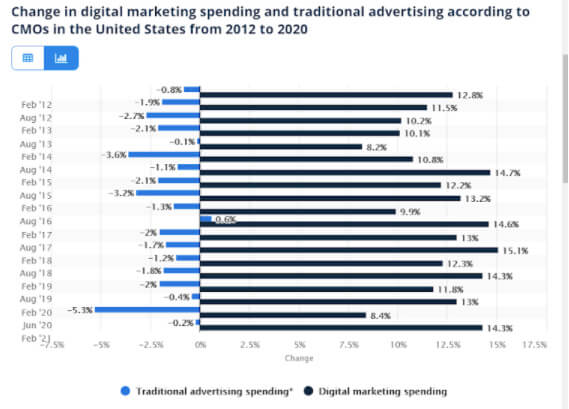
2.Spending Is Recovering
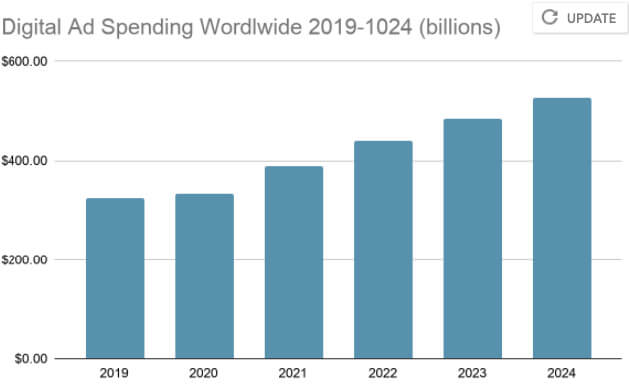
Source: eMarketer
Digital spending is recovering, and it is expected to reach $389 billion in 2024, from $332 billion in 2020. The increase is driven by the market bouncing back and trying to tap into the customer’s increasing online activity. The trend doesn’t stop there, with an expected growth of $525.17 billion by 2024.
- LinkedIn ads spending grew 40% during 2019-2020
LinkedIn ad spending reached $1 billion in the US, establishing the network as a solid advertising channel for B2B marketers (eMarketer).
- Personalization is going strong
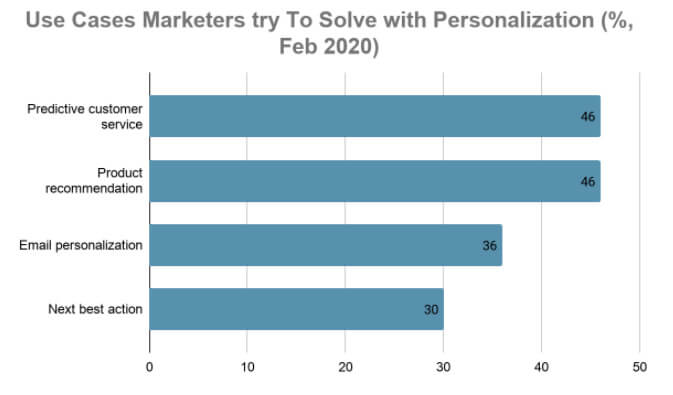
Source: eMarketer
Most marketers would focus their personalization efforts on improving the customer experience through service and product recommendations.
From the consumer’s side: 80% of consumers are more likely to do business with a company that offers personalized experiences. (Instapage)
Digital Marketing Basics
If you want to succeed in digital marketing, there are a few basic pillars that you need to master: digital presence, branding, and relationships. These three core concepts can help simplify what may be a multifaceted field.
Digital Presence
This is the key to any digital marketing you may start. These days, a digital presence is equal to having a presence at all. It is not enough to have a website or a social media page. You need a clear strategy that drives how and where you should build your presence.
Unsurprisingly, it all starts with your audience. Here are a couple of questions that can give you direction when building your digital presence:
Where does your audience spend their online time?
The golden rule of marketing is to know your customer. So, if you want to reach your audience, first find out where they spend their online time. What type of content do they consume? What social networks do they spend time on? What search terms do they use? This will help you define which channels are the most effective to build your presence.
What’s the purpose you want to achieve with your marketing strategy?
Ask yourself what you want to achieve with your online presence. Do you want to raise brand awareness? Here, your strategy shouldn’t focus on the hard-sell. If your goal is to increase conversions, then landing pages can help you close the deal with clear direction and calls-to-action.
Branding
Your brand encapsulates what your company stands for. It includes everything, from your company name, color scheme, mission statement, slogan, logo, and more.
To stand out on a sea of brands, your brand needs to showcase what it makes it unique. Keeping strong brand awareness is one of the most critical ways to differentiate yourself from the competition. Yet, it is not enough to stand out in the marketplace, but you need to stand out online too. So, refine your online branding strategy in a way that search engines recognize your brand instead of your site. In fact, the Google algorithm considers a strong brand one characteristic of a “good quality site”
Relationships
Your digital marketing strategy should not be limited to trying to appear on Google’s first page. Social networks, blogs, forums, social apps, and other similar platforms can help you build a relationship with customers online.
When we talk about marketing, relationships will always be the foundation of good business. Building an online presence will get you noticed, but creating a relationship with your audience will get you conversions.
To form effective relationships with customers, you need to be personable and personal. Using social media and good content, you can connect with your audience and let them know your brand message.
5 Challenges for Digital Marketing in 2024
-
Less spending in marketing
Marketing budgets took a hit in spending in 2020. While marketing companies are recovering, the spending is not yet at the levels we expected before 2020. Although the e-commerce ratio increased dramatically, companies have yet to catch up with the new needs in digital marketing.
-
Driving engagement across multiple channels
In 2024 it will become even more relevant to connect with customers where they are. Creating engagement will become more challenging, via adopting mobile messaging channels, and leverage personalized and dynamic content to improve the customer experience and customer loyalty.
-
Mobile-first strategy
More people are browsing and shopping from their smartphones than ever. A mobile-first approach allows your customers to consume your products/services on the go, anytime and from anywhere. So, when creating your marketing strategy for 2024, think about a mobile-first approach.
-
Establishing Omnichannel Marketing
Customers are active on multiple devices and platforms. Marketers need to combine online and social media strategies. This aims to make it easier for your audience to reach you wherever they are. Omnichannel marketing allows you to focus on the platform where your audience is most active. The key is to provide your customers a smooth customer experience when they change from a channel to another.
-
Complying with Privacy and Data Sharing Regulations
Marketers will need to adapt quickly to evolving privacy and data sharing regulations. Since many of the regulations target across frontiers, marketers need to take that into account. The phasing of third-party cookies compounds the challenge for marketers to understand a customer’s purchase intent.
The future of Digital Marketing – top 3 predictions
After analyzing the major trends for 2024, we explored the top predictions for 2024:
- From digital marketing activities to experiential events
When the pandemic hit, customers pivoted to use new technologies and performing activities online. But in 2024, many people are already exhausted from living their lives online most of the time. Keeping customers engaged will depend on how rich is the customer experience they provide. Marketers should evaluate their digital experience and refine engage customers without producing “digital fatigue”.
- Customer experience integrates with other functions
In the report, Gartner predicts that by 2023, a quarter of organizations will see marketing integrated with sales and CX into a single function. The goal is for customer-focused functions to work together with synergy.
- Content curation and moderation become more important
By 2024, Gartner predicts a third of organizations will consider moderating user-generated content a priority. Using software and tools that allow companies to monitor, moderate and manage user-generated content to prevent impact on their brands.
The bottom line
Hopefully, these trends we have aggregated and shared at CodeFuel will help guide your marketing strategy for 2024. Partnering with an expert in monetization can maximize your marketing efforts, and increasing the ROI of your strategy. Start monetizing today with CodeFuel.

